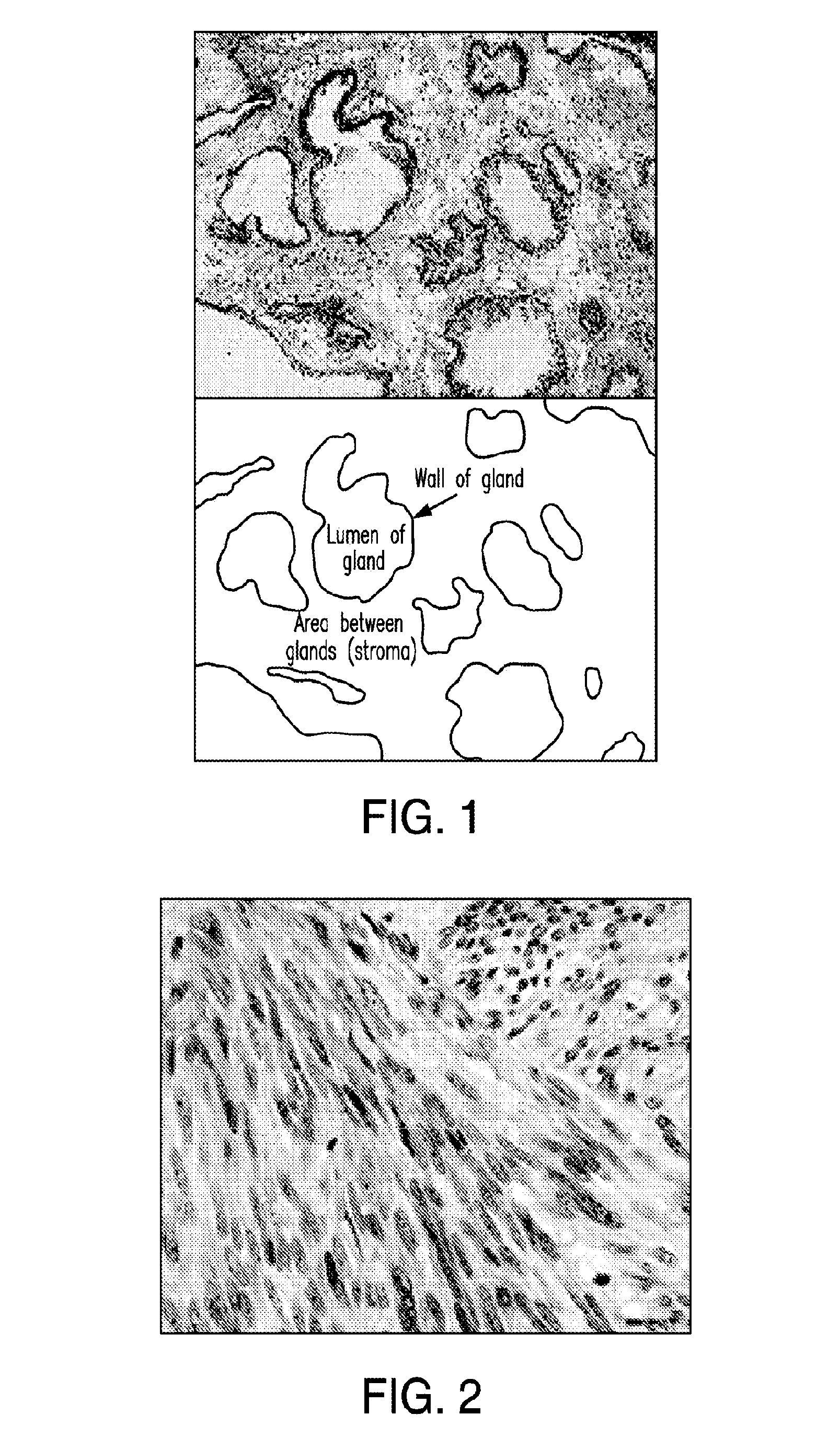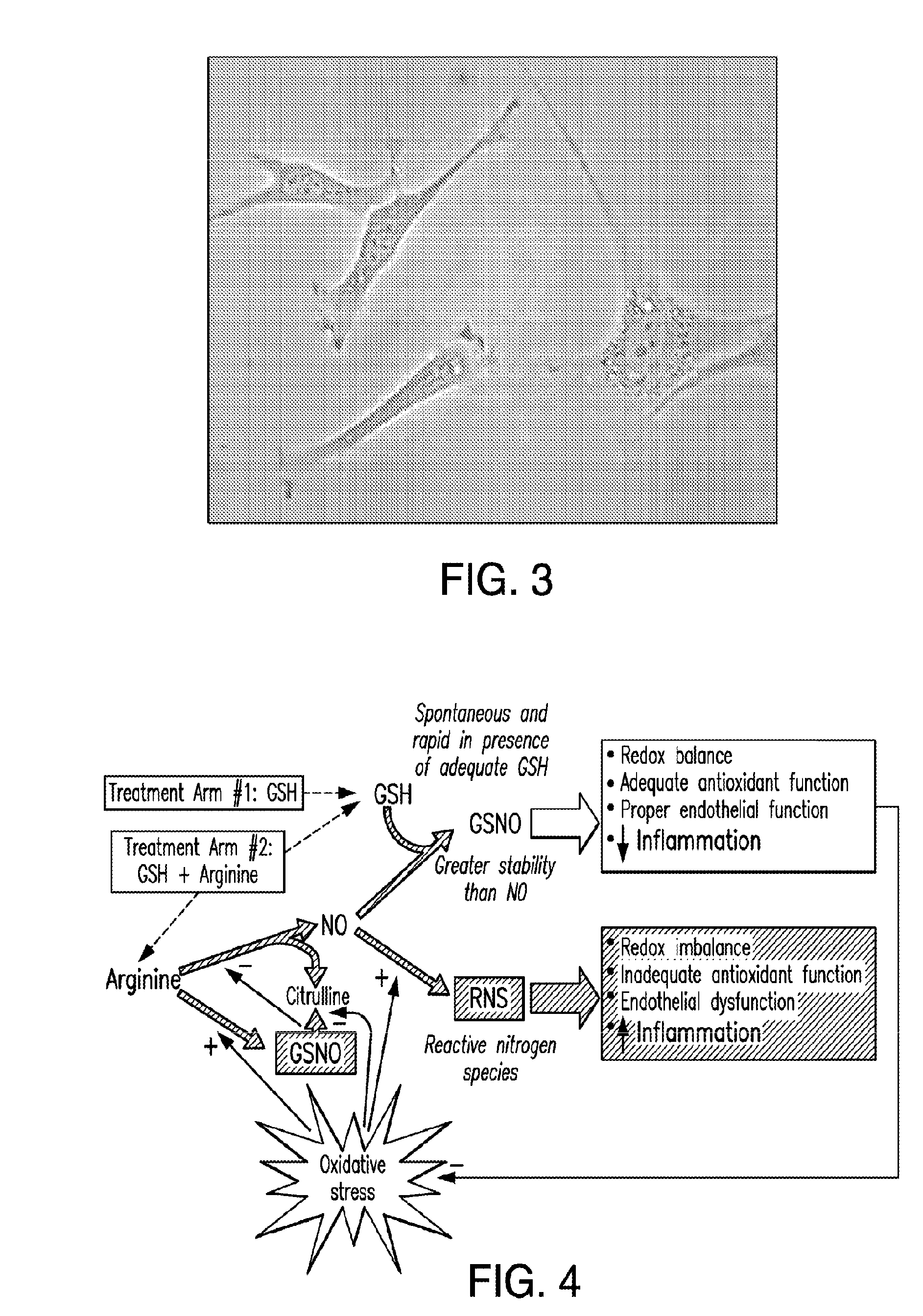Liposomally encapsulated reduced glutathione for management of cancer, including with other pharmaceutical compositions
a cancer and liposome technology, applied in the direction of biocide, drug composition, peptide/protein ingredients, etc., can solve the problems of cancer remaining a leading cause of death, cancer cells are killed, and the fuel source of cancer cells is decreased, so as to improve the level of glutathione, reduce the risk of cancer, and prevent cancer cells from dying.
- Summary
- Abstract
- Description
- Claims
- Application Information
AI Technical Summary
Benefits of technology
Problems solved by technology
Method used
Image
Examples
example 1
[0161]Liposomal glutathione Drink or Spray 2500 mg per ounce or form suitable for encapsulation or gel
% w / wDeionized Water74.4Glycerin15.00Lecithin1.50Potassium Sorbate0.10(optional spoilage retardant)Glutathione (reduced)8.25
[0162]A lipid mixture having components lecithin, and glycerin were commingled in a large volume flask and set aside for compounding. Hydroxylated lecithin is the preferred ingredient.
[0163]In a separate beaker, a water mixture having water, glycerin, glutathione were mixed and heated to, but not more than, 50.degree. C.
[0164]The water mixture was added to the lipid mixture while vigorously mixing with a high speed, high shear homogenizing mixer at 750-1500 rpm for 30 minutes.
[0165]The homogenizer was stopped and the solution was placed on a magnetic stirring plate, covered with parafilm and mixed with a magnetic stir bar until cooled to room temperature. Normally, a spoilage retardant such as potassium sorbate or BHT would be added. The solution would be place...
example 1a
[0169]Liposomally encapsulated reduced glutathione Drink or Spray 2500 mg Per Ounce or Form Suitable for Encapsulation or Gel: In %, according to w / w: Deionized Water 75, Glycerin 15.00, Lecithin 1.50, Extract Potassium 0.10 Sorbate Glutathione 8.5 (reduced)
[0170]A lipid mixture having components lecithin, ethyl alcohol and glycerin were commingled in a large volume flask and set aside for compounding. Hydroxylated lecithin is the preferred ingredient.
[0171]In a separate beaker, a water mixture having water, glycerin, glutathione were mixed and heated, but not more than, 50.degree. C.
[0172]The water mixture was added to the lipid mixture while vigorously mixing with a high speed, high shear homogenizing mixer at 750-1500 rpm for 30 minutes.
[0173]The homogenizer was stopped and the solution was placed on a magnetic stirring plate, covered with parafilm and mixed with a magnetic stir bar until cooled to room temperature. A spoilage retardant such as potassium sorbate or BHT would be a...
example 2
[0177]Embodiment two of the invention includes the incorporation of the fluid liposome (such as that prepared in Example 1A) into a gelatin based capsule to improve the stability, provide a convenient dosage form, and assist in sustained release characteristics of the liposome. The present embodiment relates to the use of glutathione in the reduced state encapsulated into liposomes or formulated as a preliposome formulation and then put into a capsule. The capsule can be a soft gel capsule capable of tolerating a certain amount of water, a two-piece capsule capable of tolerating a certain amount of water or a two-piece capsule where the liposomes are preformed then dehydrated.
[0178]The liposome-capsule unit containing biologically encapsulated material can be taken in addition to orally, used for topical unit-of-use application, or other routes of application such as intra-ocular, intranasal, rectal, or vaginal.
[0179]The composition of examples 1 and 2 may be utilized in the encapsu...
PUM
| Property | Measurement | Unit |
|---|---|---|
| size | aaaaa | aaaaa |
| size | aaaaa | aaaaa |
| total volume | aaaaa | aaaaa |
Abstract
Description
Claims
Application Information
 Login to View More
Login to View More - R&D
- Intellectual Property
- Life Sciences
- Materials
- Tech Scout
- Unparalleled Data Quality
- Higher Quality Content
- 60% Fewer Hallucinations
Browse by: Latest US Patents, China's latest patents, Technical Efficacy Thesaurus, Application Domain, Technology Topic, Popular Technical Reports.
© 2025 PatSnap. All rights reserved.Legal|Privacy policy|Modern Slavery Act Transparency Statement|Sitemap|About US| Contact US: help@patsnap.com


